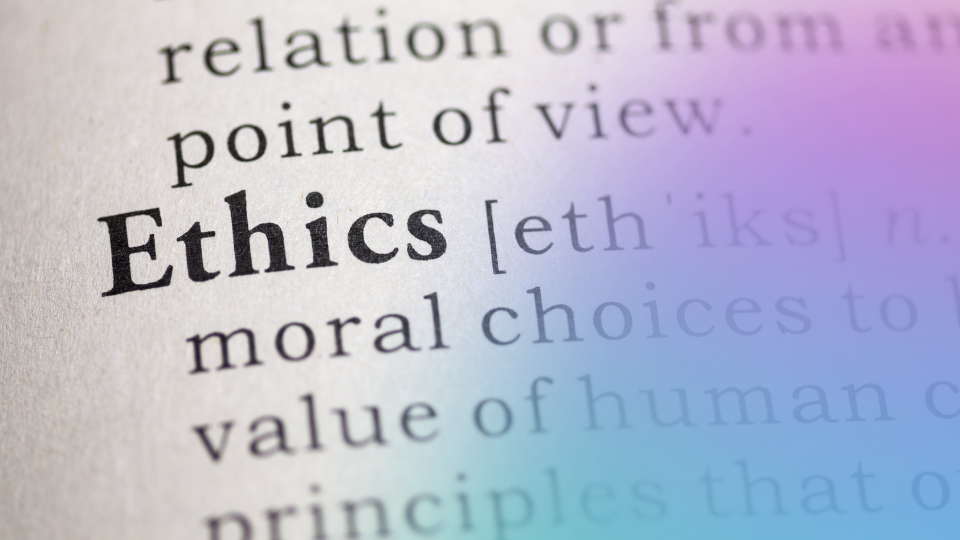Inclusive Language is increasingly discussed and debated in companies of all types and sizes worldwide. Policies and guidelines on Inclusive Language are appearing more frequently in corporate, educational, and governmental settings. Yet, in some organizations, employees meet them with great resistance, while in others, they joyfully embrace them.
This blog post is a Handbook where we explain the seven steps of how to build an Inclusive Language Guide so that its guidelines are quickly accepted and consistently used throughout your organization. In addition to the Handbook, we also provide you with a Template of such a guide. The Template is already pre-written for you according to the tips of this Handbook and contains many examples and resources. Together - the Handbook and the Template -, they provide everything you need to create an organization’s Inclusive Language Guide that will be embraced by your employees.
Note: The easiest way to create your Inclusive Language Guide is to read the instructions in this Handbook and then adapt the pre-written text in the Template to your organization’s needs by adding your own content and examples.
Step 1: Explain the “Why”
The title of this chapter 1 might be: “Why we have decided to create an Inclusive Language Guide”.
A good place to start is by explaining why you are creating an Inclusive Language Guide and the foundation on which it was built. Why is it needed? How is it related to other Diversity and Inclusion measures, if any already exist? And which goals are you trying to accomplish by developing the guidelines?
This explanation is crucial. If you want to get everyone on board, they have to be able to understand why you are taking what some may perceive as a drastic measure. For many, at first sight, it might seem like you’re impeding their personal freedom, while others don’t care to be bothered. Nevertheless, there are likely many in the company that will welcome the effort and the resulting Guide.

A comprehensive and well-communicated explanation will help ensure that those who are critical will be more inclined to support the endeavor, and the most vocal opponents will have their issues addressed proactively. Not to mention that it will help to give arguments and resources to those who support the initiative.
Different studies show that an inclusive company improves resilience, innovation and performance (1). An inclusive culture has the potential to increase productivity by 30% and employee retention by 35% (2).
To give the Inclusive Language Guide the credibility it needs, it is highly recommended that Step 1 is written, or at the very least signed by the whole management team, and not just the Head of Communications or Head of Diversity and Inclusion. If the whole management team explicitly supports the guidelines formulated in the Guide, employees will be more likely to understand that this is a broadly supported initiative.
Beware that those language guidelines published by less-senior employees will likely experience backlash. In many cases, employees who produce an Inclusive Language Guide are attacked personally, demoralizing the employees and demeaning the initiative. We have even seen some examples where less-senior employees who have produced such a Guide without the explicit support of senior leadership have been so demoralized they have left the company.
If you find that some of your staff are attacking the authors of the guide, support the authors, express that such behavior is not acceptable and reiterate that the leadership team stands behind Inclusive Language.
Step 2: What Is Inclusive Language?
The title of this chapter 2 might be: “What is Inclusive Language in our company?”
As a second step, define what “Inclusive Language” means for your company or organization. There isn’t an official definition of Inclusive Language, and many interpret the term quite differently. In order to build a common understanding, it helps to make it clear.

As a starting point, you can take the Wikipedia inclusive language definition, which says:
“Inclusive language avoids expressions that are considered to express or imply ideas that are sexist, racist, or otherwise biased, prejudiced, or insulting to any particular group of people and sometimes animals as well. …” (3)
Alternatively, you can develop your own inclusive language definition; something along the lines:
“Inclusive Language avoids wordings that express stereotypes, bias and any form of open or hidden discrimination with regard to any diversity dimension. Special care is taken to address and include everyone, regardless of their background. By using Inclusive Language, we have the goal to make everyone feel that they belong.” (see also the Template).
If you don’t define it up front, confusion may result: Many companies talk of Inclusive Language when they only mean gender-inclusive language, while others only mean language that avoids slurs. Confusion can inhibit the process of adapting such guidelines.
A clear definition is key.
-
Decide on which diversity dimensions you are focussing in your definition of Inclusive Language and your Guide. Naturally, you can also say that you cover “all” dimensions. In this case, you will have to ensure that you also deliver examples for every dimension. In this guide, we have limited ourselves for demonstration purposes.
-
Determine if you mean only openly discriminatory language like slurs or if you also mean the more hidden, mostly unconscious stereotypes that frequently happen in language.
It’s recommended to mention that you are paying tribute to linguistic developments coming from social movements like Black Lives Matter, #metoo, LGBTQIA+, and others as well as recommendations evolving from psychological research.
Many employees detect an obvious slur in language. We have more trouble when problematic language comes in the form of hidden stereotypes that are based on unconscious bias. For this, we recommend that you provide a resource that explains the concept of unconscious bias as well as how unconscious bias affects language.
If you want to go more in depth, read our blog post What is inclusive language? And why should I care?
What is inclusive language?
If you want to go more in depth, read our blog post What is inclusive language? And why should I care?
Step 3: Provide Examples of Inclusive Language and Pick Diversity Dimensions
The title of this chapter 3 might be: “Diversity dimensions we focus on in our Inclusive Language”.
It’s important to define which diversity dimensions you will cover in your company’s use of Inclusive Language. This will help prevent misunderstandings. Naturally, your definition of Inclusive Language has to be in accordance with this chapter 3. Examples of inclusive language are also important so that Inclusive Language becomes more tangible for your people.
Examples of Inclusive Language
If you want to see easily understandable examples of Inclusive Language, you can find them here.
Depending where your company is located or where you do business, diversity dimensions might be handled differently. Explain that here.
In the Template, some diversity dimensions are enumerated and explained. However, you might want to add more or emphasize a particular dimension depending on your region and culture.
For most employees, it will be very hard to detect non-inclusive language and how they should reformulate it to make it inclusive. This is especially true because some non-inclusive language is unconscious. In many cases, we don’t even realize the language is non-inclusive because it’s so deeply ingrained in our minds. That’s why we recommend a tool to help your employees called Witty. Witty detects non-inclusive language and suggests inclusive alternatives in real-time as part of the writing process. Witty also explains the bias behind the word so that employees get educated about unconscious bias while writing.
Step 4: Provide a Grading System and Learning Process
The title of this chapter 4 might be: “Our grading system and learning path”.
Define which language use is acceptable - because
people are still learning - and which language
should never be used because it’s obvious why it’s
problematic, or it has legal ramifications.
Language evolves over time, and people
continuously must evolve their understanding of
language as well. They especially need to keep up to
date on unconscious bias in language. It’s normal
that employees won’t know everything, and they may
make mistakes. That’s why it’s important to explain
that it’s ok for employees to know they have the
opportunity to learn.
Nevertheless, there are obvious slurs and aggressive language that everyone knows is non-acceptable. If not stopped, it will harm your company, even if it is a joke. You should clearly express in your Guide what language is recognized as non-inclusive or offensive and which isn’t. The most effective way to do this is with a grading system.
The format of the actual grading system is up to you, and you can determine how granular you would like to be. The grading system can also change or evolve as expressions move from one level to the next.

You should also explain what your employees can do if they overhear non-acceptable expressions. As mentioned above, words are always an expression of personal values or company culture. Language builds culture. And vice versa, culture builds language (4). If a person keeps on using non-acceptable words, it can lead to a toxic environment and influence your culture negatively. More often than people realize, employees leave companies because of toxic communication. That’s why you should not excuse it with “It’s just words”. Take non-inclusive language very seriously.
We recommend that employees who overhear non-acceptable communication either address HR representatives or work together with an external third party that can address such claims (often called an Ombudsman or a Watchdog).
It’s also important to explain that you are on a learning path, and people should help each other in that process.
Finally, it must be made clear that the burden of raising non-inclusive language to the attention of the company is not on the shoulders of underrepresented groups or employees. All employees within the company are responsible for monitoring non-inclusive language and should educate themselves accordingly.
Step 5: Apply Inclusive Language
The title of this chapter 5 might be: “Where do we apply Inclusive Language?”
Enumerate in which kind of communication your company expects to see Inclusive Language. You can explain the sort of text as well as the roles that normally produce the communications, written or otherwise.

You may want to differentiate between
written and spoken language, for example, since
Inclusive Language can be more easily created in
written text.
See the Template for an enumeration where Inclusive Language can be applied. For example, you could apply the Inclusive Language guide in Social media communication, marketing campaigns, marketing blogs, product descriptions, and your website content. Generation Z pays particular attention to inclusion (5).
Step 6: Measure Inclusive Language Progress
The title of this chapter 6 might be: “Measuring helps us to get better”.
This step is optional, depending on where you are in your journey. However, we recommend measuring your progress in the use of Inclusive Language in your organization. Without measuring, you don’t know where you are going or how fast you will get there.
Explain why, what and how you are measuring progress and ensure privacy is guaranteed at all times. It should never be possible to track down who wrote what. When we measure language use, we don’t measure who wrote what. We want to measure how we are doing as a company: Where do we have deficiencies? Which words that are non-inclusive happen the most? Has Inclusive Language changed something in the sense of employee belonging or customer perception?
Inclusive Language metrics give insights into current status and progress. They can also give you a hint of where to focus as a company concerning your inclusive culture.
The tool Witty (https://witty.works) helps organizations measure language use. Without a software tool, it would be extremely difficult to measure language use. In Witty, privacy is a core feature and is controlled by an AI Ethics Board.
Step 7: Conclusion
The title of this chapter 7 might be: “Let’s make our organization more inclusive - together, with our language”.
In the final last step, emphasize again that:
- Inclusive Language is a crucial part of your journey toward an inclusive culture, and the Inclusive Language Guide can give confidence to everyone with regard to linguistic developments and brand strategy.
-
Use
Witty
to make Inclusive Language applicable in
real-time
and to assist all employees in applying the
guidelines without hassle.
If you are looking for a digital writing assistant for inclusive language, try out Witty for free. Witty detects non-inclusive language and provides ongoing training on unconscious bias and operationalizes inclusion.
—-
Resources:
- Vivian Hunt, Dennis Layton and Sara Prince, McKinsey & Co., "Diversity Matters" (2015) and Vivian Hunt, Sara Prince, Sundiatu Dixon-Fyle and Lareina Yee, McKinsey & Co, "Delivering Through Diversity" (2018)
- Russell Reynolds Associates, “Diversity and Inclusion Pulse Survey”, (2019)
- Wikipedia, https://en.wikipedia.org/wiki/Inclusive_language
- Lera Boroditsky, “How language shapes the way we think”, https://www.ted.com/talks/lera_boroditsky_how_language_shapes_the_way_we_think?language=en
- Tessa Charlesworth, “Hidden but Widespread Gender Biases Emerge in Millions of Words”, (2021)
- Tracy Francis, Fernanda Hoefel, “‘True Gen’: Generation Z and its implications for companies”, https://www.mckinsey.com/industries/consumer-packaged-goods/our-insights/true-gen-generation-z-and-its-implications-for-companies?trk=lms-blog-trust&src=bl-po

-1.png)




